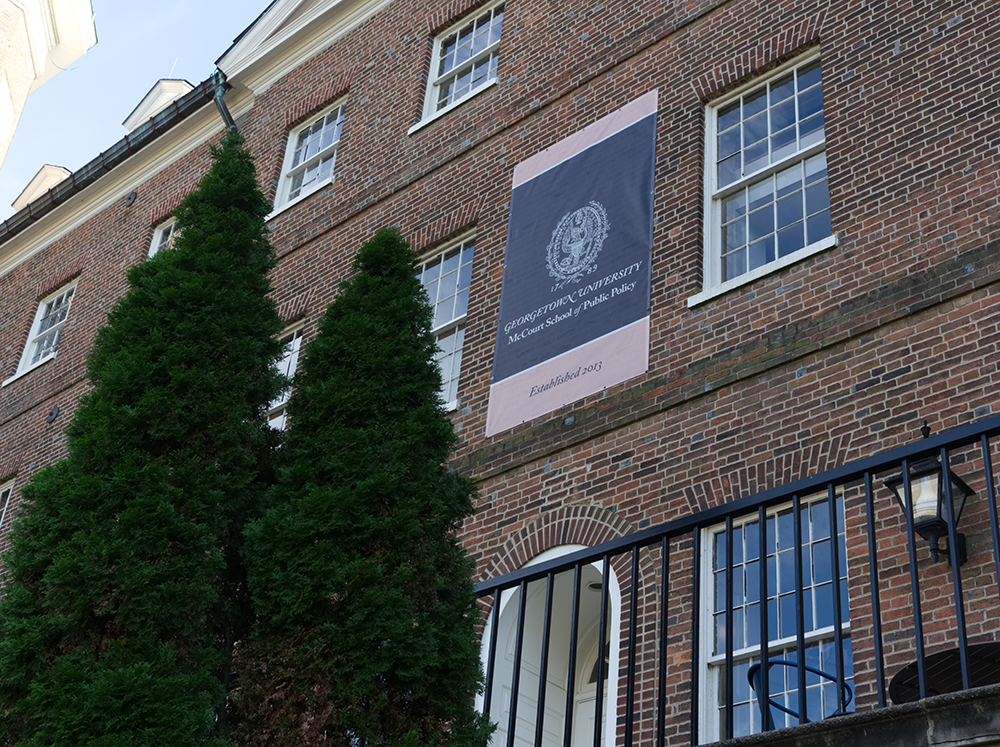Georgetown University students at the McCourt School of Public Policy are assisting city officials by developing a new algorithm to improve rental housing inspections after several controversies relating to inspection negligence in Washington, D.C.
In recent years, the Washington, D.C. Department of Consumer and Regulatory Affairs has faced blowback after negligent building rental inspections. The issue received attention after the D.C. Council held a hearing in November 2019 about a fire that killed two people, including a 9-year-old boy, in a Northwest row house that seemed to have been illegally rented, according to The Washington Post.
Amid other recent reports of oversight in safety checks by city inspectors, graduate students involved in the new data science for public policy program have been working with the DCRA to improve inspection efficiency since last year. The partnership benefits McCourt students and the greater D.C. community, according to program professor NaLette Brodnax.
“The purpose of our partnership with DCRA has been two-fold,” Brodnax wrote in an email to The Hoya. “First, to provide students with the opportunity to learn data science with a hands-on, real-world problem. Second, to assist DCRA in leveraging their existing data to improve agency processes.”
Students have been working alongside DCRA to focus on developing a system for more thorough housing inspections, according to Brodnax.

“After some discussions with the agency, the students participated in several projects using data on housing inspections, construction, and permitting,” Brodnax wrote. “Subsequently, the class worked to identify patterns in housing complaints and inspection reports in order to develop an algorithm that could be used to identify properties for proactive inspection.”
The algorithm, called the Proactive Inspection Program, routinely assesses properties for adherence to code compliance, according to Neha Tiwari (GRD ’20), a graduate student who began working on the project in fall 2019.
“The aim was to help DCRA solve certain specific problems using data science as well as gain practical experience through the same by working with a real and messy dataset with actual uses and implications,” Tiwari wrote in an email to The Hoya.
The current system relies on law enforcement officials filing reports of unsafe conditions. Before the rowhouse fire, investigators from the DCRA or the Fire and Emergency Medical Services Department did not inspect the building despite notifications to both agencies. However, a police officer who surveyed the building noted multiple safety concerns, according to The Washington Post.
A more standardized process would make it more difficult for violations to go unnoticed, according to Tiwari.
“Currently, the way inspections are alloted is completely random. In the interest of resource
management, it was prudent to allocate inspections by prioritizing properties which were more
likely to be in noncompliance,” Tiwari wrote.
The Proactive Inspection Program attempts to correct the inspection process and prevent tragedies by taking a building’s violation history into account, according to Tiwari.
“My approach was to improve the allocation process. The way to do this was to take into account the inspection and violation history besides the neighborhood and building characteristics when allocating inspections,” Tiwari wrote. “The intuition was that the buildings which have a history of violations may have a higher likelihood of being in violation in future as compared to ones that don’t.”
Expansions to the algorithm will be ready within the next few months, according to Brodnax. More information about buildings and neighborhoods might be added, but new features will be introduced to avoid the risk of stereotyping and improve the algorithm, according to Tiwari.
“Adding more neighborhood characteristics and demographic information to the model is a future consideration,” Tiwari wrote. “However, we should be careful to not let implicit demographic and other biases affect model’s inspection allocation unfairly.”
Representatives for the DCRA did not respond to The Hoya’s request for comment.





















Roy Smith • Feb 12, 2020 at 6:13 am
What is DCRA?